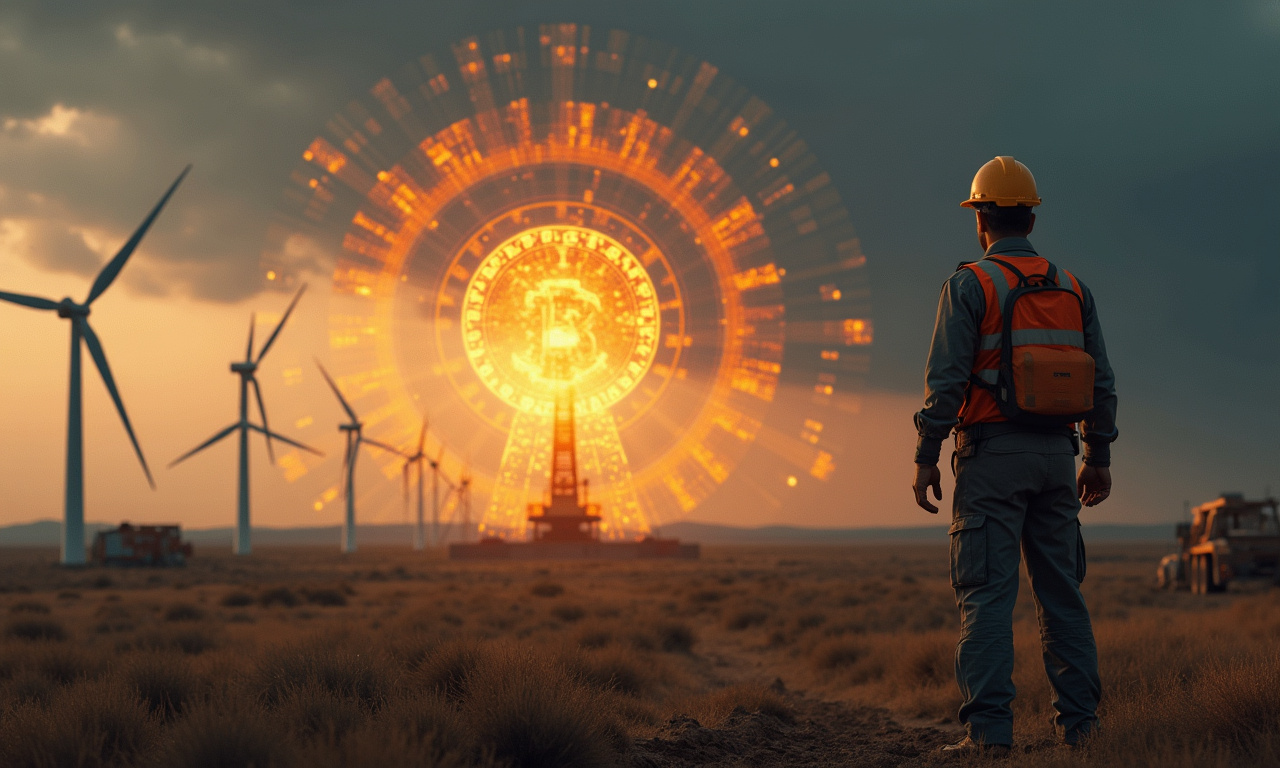Bitcoin Mining's Texas-Sized Problem: Is This Drop a Warning Sign?

The anticipated 9% decline in Bitcoin mining difficulty is more than just a statistically significant shift. It’s a flashing red light on the dashboard. This dramatic decline is an early warning of systemic weaknesses in the underlying Bitcoin network. While some hail it as a lifeline for struggling miners, I see a more concerning narrative unfolding – one of unintended consequences stemming from geographic concentration and a reliance on potentially unstable energy infrastructure. Are we truly decentralized?
Texas Heat: Bitcoin's Achilles Heel?
Let's be blunt: Texas, with its deregulated energy market and crypto-friendly politicians, became a magnet for Bitcoin miners. What would it take for the Texas grid to really snap under the pressure of record-breaking heatwaves? When demand is high, miners are required to power down so that they don’t overload the system. As a result, about half the Bitcoin hashrate just up and vanishes overnight.
This isn’t some imaginary future situation, it’s reality today. And it exposes a critical weakness: the Bitcoin network, often touted as impervious to centralized control, is surprisingly vulnerable to the whims of a single geographic location and its climate.
Think about it: We're trusting the security and stability of a multi-billion dollar network to the reliability of the Texas power grid during peak summer months. That’s like making a stronghold out of a castle built on quicksand. It's a risk that demands serious consideration. How stable is your Bitcoin?
Difficulty Adjustment: A Temporary Fix?
The Bitcoin protocol’s difficulty adjustment mechanism aims to keep overall block production rate at an average of around ten minutes per block. When miners temporarily unplug, block times lengthen, which causes a negative adjustment in the difficulty. This makes it easier (and more profitable) for remaining miners to mine new blocks.
This is a reactive measure, not a preventative one. It’s the equivalent of putting a band-aid on a gushing injury. The 10% difficulty drop provides a temporary respite for pain mining miners who are losing their shirts. Beyond that though, it doesn’t touch the underlying issues of geographic concentration and infrastructure vulnerability.
Worse, it creates a boom-and-bust cycle. Difficulty decreases, miners regain profitability, hashrate starts to climb, difficulty readjusts, and the cycle goes in circles. Such unpredictable yo-yo fluctuations aren’t conducive to the long-term health of the network. It’s not very comforting to the world either for those who think Bitcoin is a safe haven asset.
Decentralization: Fact Or Fiction?
The basic premise of Bitcoin couldn’t be more contrary – a decentralized network, one not controlled by any single government, bank, or organization. When a large share of the global hashrate concentrates in one geographic location, it encounters those same environmental and regulatory pressures. This concentration further counters the many benefits that could come from decentralization.
Consider this: if a major hurricane were to hit the Gulf Coast and cripple the Texas power grid, the impact on the Bitcoin network could be severe. Block production times would increase dramatically, transaction fees might explode, and the general usability of the network would be affected.
For smaller miners, the burdens are even heavier, as they must compete with larger, more efficient operations. Consequently, mining has become more and more a game only the powerful few can afford to play. This slow but steady erosion of decentralization chips away at the bedrock principles that Bitcoin was originally built upon. Or are we headed to a system controlled by the few elite? This couldn’t be more different than the decentralized utopia that Satoshi Nakamoto imagined.
At today's hashprice of $53, under the $60 level most miners require to cover their costs and turn a profit, it’s a bleak outlook. We're seeing a consolidation of mining power, and that's a dangerous trend.
We should continue to advocate for greater diversity in the mining sector. Let’s set them up in different geographic areas and make sure they are enabled by a flexible mix of renewable and reliable energy. If we want to mine responsibly and sustainably, we need to be supporting policies that would facilitate that. We need to hold mining operations accountable by demanding more transparency about their energy use and where they’re located.
Far beyond the scope of Texas, these current and recent heatwaves should serve as a global wake-up call. We will show that the Bitcoin network is far more fragile than many realize. Let’s recognize its vital importance today and invest in its long-term stability and decentralization. If we don't, we risk undermining the very foundation of this revolutionary technology. Aren’t you ready to start thinking the way that will determine the future of Bitcoin?

Tran Quoc Duy
Blockchain Editor
Tran Quoc Duy offers centrist, well-grounded blockchain analysis, focusing on practical risks and utility in cryptocurrency domains. His analytical depth and subtle humor bring a thoughtful, measured voice to staking and mining topics. In his spare time, he enjoys landscape painting and classic science fiction novels.


